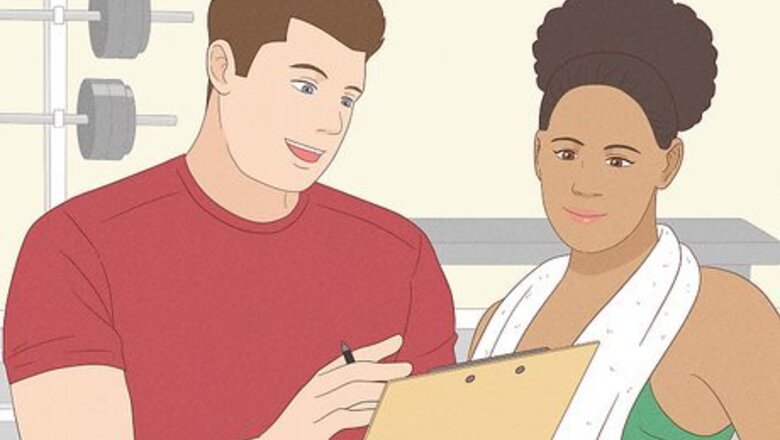
views
X
Research source
Upping the Intensity
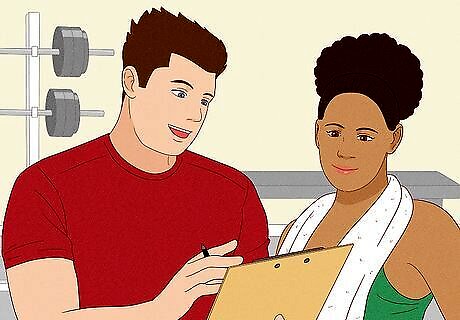
Figure out proper intensity. To get strength gains from a once-weekly workout, work with a personal trainer to figure out what exercises are right for you, and at what intensity. They can help you develop a workout plan that lets you make the most of your weekly gym time by practicing functional exercises that mimic daily activities. You may have to experiment to find the right weight for you. Remember that good form is critical to building strength and keeping yourself safe, so it's better to start light and develop your form than to go too heavy to fast. Increase the weight every few weeks as you build strength and your muscles become used to the load.

Try to get some cardio exercise more often. While once-weekly workouts can help build muscle strength, once a week really isn't sufficient for cardio exercise. You don't necessarily need to go to the gym to get a healthy amount of cardio into your day. A 10- to 15-minute walk in the morning or evening is sufficient. You also can add cardio into your regular day, for example by taking the stairs instead of the elevator, or by parking further away from your destination.
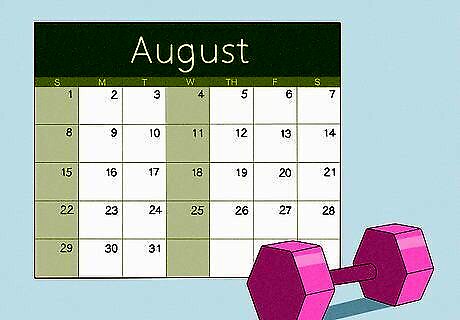
Consider doing twice-a-week sessions. If your aim is significant strength gains, or if you're trying to build muscle endurance for other activities, you may benefit more from working out twice a week than only once. Researchers differ on whether twice weekly sessions are better, but evidence has shown that athletes who did strength training twice a week rather than once a week added more than twice as much lean muscle than those who worked out only once a week. Twice-weekly workouts also are less shocking to your muscles and your body, allowing you to adapt and build muscle more quickly.
Choosing Whole-Body Exercises
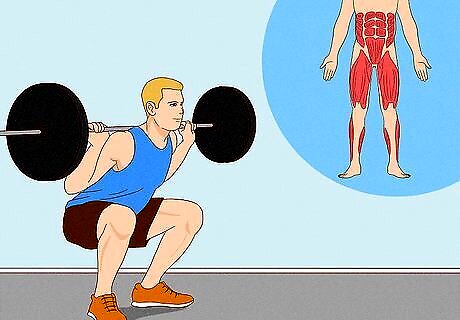
Do compound lifts. If you're only working out once a week, you need to choose weight-lifting exercises that engage multiple muscle groups, such as dead lifts, squats, and military presses. Compound lifts work both major and minor muscle groups. Doing compound lifts also means that you can do fewer exercises, which will make your once-weekly workout shorter than if you were doing exercises that isolated or targeted only a single muscle group. Keep your resistance low to moderate to help avoid injury.
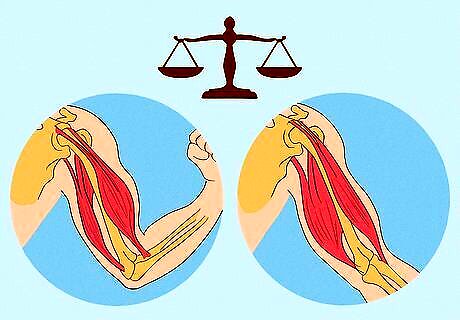
Balance every muscle group. When you're choosing the exercises to include in a once-weekly workout, include exercises that engage both the pushing and pulling muscles, the positive and negative movements. Uneven muscle development can put you at risk for injury. You'll get the most out of your workout if you evenly build the counterpart to each muscle group. For example, if you do a biceps exercise, you should also do a triceps exercise.
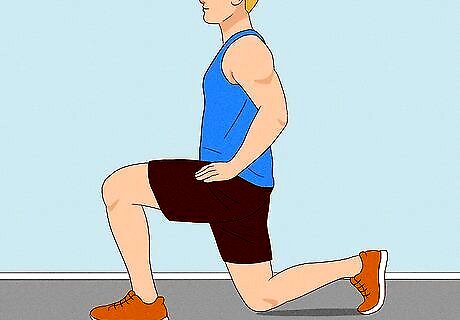
Include bodyweight exercises. While weight training can quickly build muscle mass, bodyweight exercises also are important for strength training, particularly in once-weekly workouts. The other benefit of bodyweight exercises is that you can do them anywhere, without needing a gym or any bulky equipment. For this reason, a full bodyweight exercise routine is ideal if you're traveling and need to workout away from home. Just 15 to 20 minutes of basic squats, push-ups, planks, and lunges can be of maximum benefit once a week.
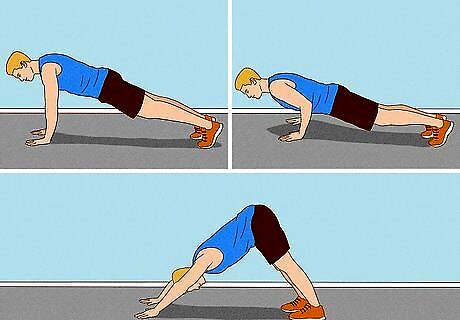
Add a plank series. Planks are essential to build and strengthen your core. In a once-weekly workout, you can build a dynamic series with a breath for each movement to increase the intensity of the basic plank. Start the series in a full plank with your feet about hip-width apart and your wrists directly under your shoulders. On an exhale, lower your hips to the floor, rolling onto the tops of your feet. On an inhale, lift and open your chest, bending your back deeply and raising your hips off the floor. As you exhale, roll onto your toes and lift your hips to the ceiling so that you are in an upside-down V-shape. Drop to a plank on your next inhale. Repeat the series 5 to 10 times.
Designing Your Routine
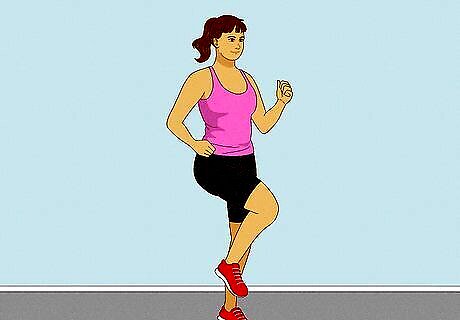
Start with a dynamic warm-up. Before you engage in high-intensity exercise, warming up your muscles and getting your heart rate up is essential. A dynamic warm-up will get your blood pumping and get your muscles ready for more intense exercise. You can exercise by jogging in place and doing some quick lunges. You also want to include some upper-body movement, such as circling your arms backwards and forwards. Move fairly quickly, and include a warm-up of five minutes or more before you get into your workout.

Organize your circuits or intervals for maximum impact. When designing a once-weekly workout routine, you'll get more benefit in the shortest amount of time if you line up your exercises so that you are working opposing muscle groups sequentially. Alternatively, you may get even greater benefit and more functional muscle memory from combining upper and lower body exercises. For example, you would follow an upper-body exercise with a lower-body exercise. This allows your upper body to recover while you work out your lower body, enabling you to take fewer rest breaks in between exercises. Because you don't allow your muscles to recover fully by taking extended rest periods, you keep your heart rate elevated, naturally upping the intensity of your workout.
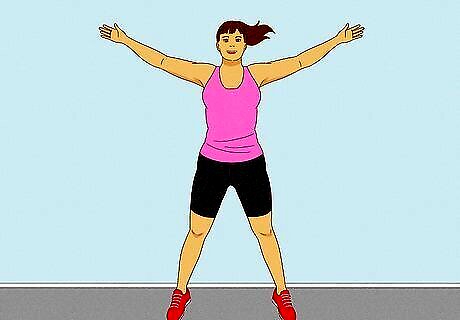
Include plyometric exercises. Plyometric exercises are jumping exercises such as jumping jacks, mountain climbers, or burpees. These exercises build explosive power in your muscles and also give you a whole-body workout. Plyometric exercises also engage your cardiovascular system, keeping your heart rate elevated and upping the intensity of your workout.

Stretch to cool down. Stretching is essential to increase flexibility, but you should stretch warm muscles. Dynamic stretching for two to three minutes at the end of your workout is sufficient and will allow your heart rate to slow and your core temperature to lower after high-intensity exercise. Start with an overhead stretch, then fold forward into a full forward bend. You also might add quad and glute stretches. Hold each stretch for 30 seconds, and don't bounce or pulse the stretch. Lunges also are good stretches for the quads.



















Comments
0 comment